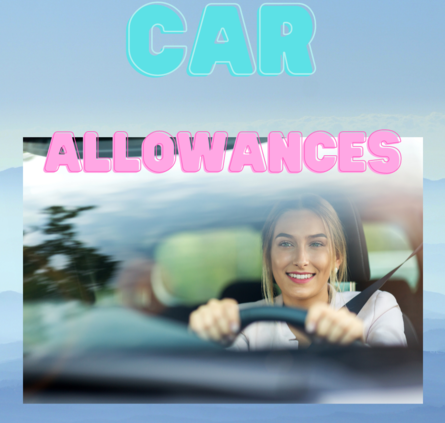With the Fringe Benefits Tax year ending on 31 March, it is a good opportunity to look at the difference between providing a fully paid car for your employees (subject to fringe benefits tax), or instead providing them with a car allowance. This article will help to explain the difference and hopefully assist with making this decision. If you are an employee who does get a car allowance, this will help you to understand how to get the best tax benefits from it.
What is a car allowance?
A car allowance is a payment to an employee of a set amount (usually as part of their pay) to assist with the running costs of a car. Typically, a car allowance is only provided when a car is a necessary part of being able to perform the job role. It is common for such jobs as sales representatives and real estate agents.
The payment of the car allowance is an expense to the business providing the allowance. It is an expense that is very similar to a wage payment. The responsibility for justifying the business usage of the car is transferred from the business to the employee. The employee is the owner of the car and responsible for all of the expenses relating to that car.
The employee receiving the car allowance will need to justify how this money was spent when they do their tax return.
What is a car fringe benefit?
If a business provides a car to an employee that is owned or leased by the business, a potential car fringe benefit exists. The justification for the business usage and any resulting fringe benefit tax falls to the employer. For more details on motor vehicle fringe benefits see an article I have previously written at the following link.
https://www.tradiewags.com.au/wagtips/2019/5/12/fringe-benefits-tax-part-2-the-motor-vehicle
If your car is provided by your employer or provided under a salary sacrifice arrangement you are not able to claim motor vehicle expenses in your individual tax return. The tax deduction has already been claimed and essentially you are double dipping.
Paying a car allowance and tax
Many employees wrongly assume that a car allowance is a tax free payment. This is not true. A car allowance is taxable income to the employee and will be included in their tax return. Like all allowances, it is a trigger for your tax preparer to discuss whether there is an offsetting deduction that could apply.
If you want your car allowance to be paid without tax being withheld you will need to apply to the ATO to vary your PAYG Withholding. The ATO will assess your application and advise your employer of a different withholding rate that may apply to your pay. For more information (or to apply for a PAYG Withholding Variation) please see the link below.
Note, the ATO states that an employer cannot vary the withholding rate until they receive an official variation notice from the ATO. Variation notices only last for one financial year. With the increased scrutiny on payroll by the ATO and your obligations as an employer to withhold money on staff wages, I strongly suggest you follow these rules and only change the tax withholding rate on advice from the ATO.
Maximising your car allowance deductions
If you are getting a car allowance it is essential that you keep a log book for your car. Without a valid log book you will only be able to use the Set Rate Method (cents per kilometre) to claim your car expenses. This is capped at 5000km. The rate in 2020/21 is 72 cents per kilometre, so the maximum claim is $3,600.
While this is a great claim for someone who does use their motor vehicle moderately for work, it is not a particularly good claim if you are receiving a $10K or $15K car allowance and using your car extensively for work.
If you do have a log book your claims can be as follows (taken straight from the ATO website):
Under the logbook method:
-
Your claim is based on the business-use percentage of the expenses for the car.
-
Expenses include running costs and decline in value but not capital costs, such as
-
the purchase price of your car
-
the principal on any money borrowed to buy it
-
any improvement costs.
-
-
To work out your business-use percentage, you need a logbook and the odometer readings for the logbook period. The logbook period is a minimum continuous period of 12 weeks.
-
You can claim fuel and oil costs based on either your
-
actual receipts
-
estimate of the expenses based on odometer records that show readings from the start and the end of the period you had the car during the year.
-
-
You need written evidence for all other expenses for the car.
Creating a valid logbook
While there are physical ways of creating a proper log book (see the article below), the ATO are strongly encouraging taxpayers to use the myDeductions tool.
https://www.tradiewags.com.au/wagtips/2019/5/24/keeping-a-proper-log-book
The myDeductions tool can be found on the ATO App which is very handy to have on your phone. It is useful for any work related expenses, but also has the ability to record your work related travel. There are three ways it can do this; a point to point trip, a GPS trip or an odometer trip. The ATO will accept the information on this app as a valid log book.
Simple tips to get the best results from your car allowance
1. Keep a valid log book (this is essential)
2. If you have more than one car in the family, use a different car for your private family trips when possible. This will help you to maintain a higher business use percentage for your work vehicle
3. Set up a separate bank account that is only used for the allowance and car expenses. This helps to keep everything in the same place.
4. Don’t buy a car that is too expensive. The ATO have a cap on the car cost that can be depreciated and this is currently set at $59,136. While this does not prevent you from buying a very expensive car, you can only claim the depreciation up to this amount.
5. Keep all of your records for fuel, services, insurance and registrations.
Wrap up
If you are an employer and you are looking to pay your employee a car allowance, make sure they are aware of their obligations to keep good records. Only offer a car allowance to an employee who needs a car to perform their work, and make sure you are withholding the appropriate amount of tax from the payment.
Car allowances can work very well for those who understand them and keep their records.



